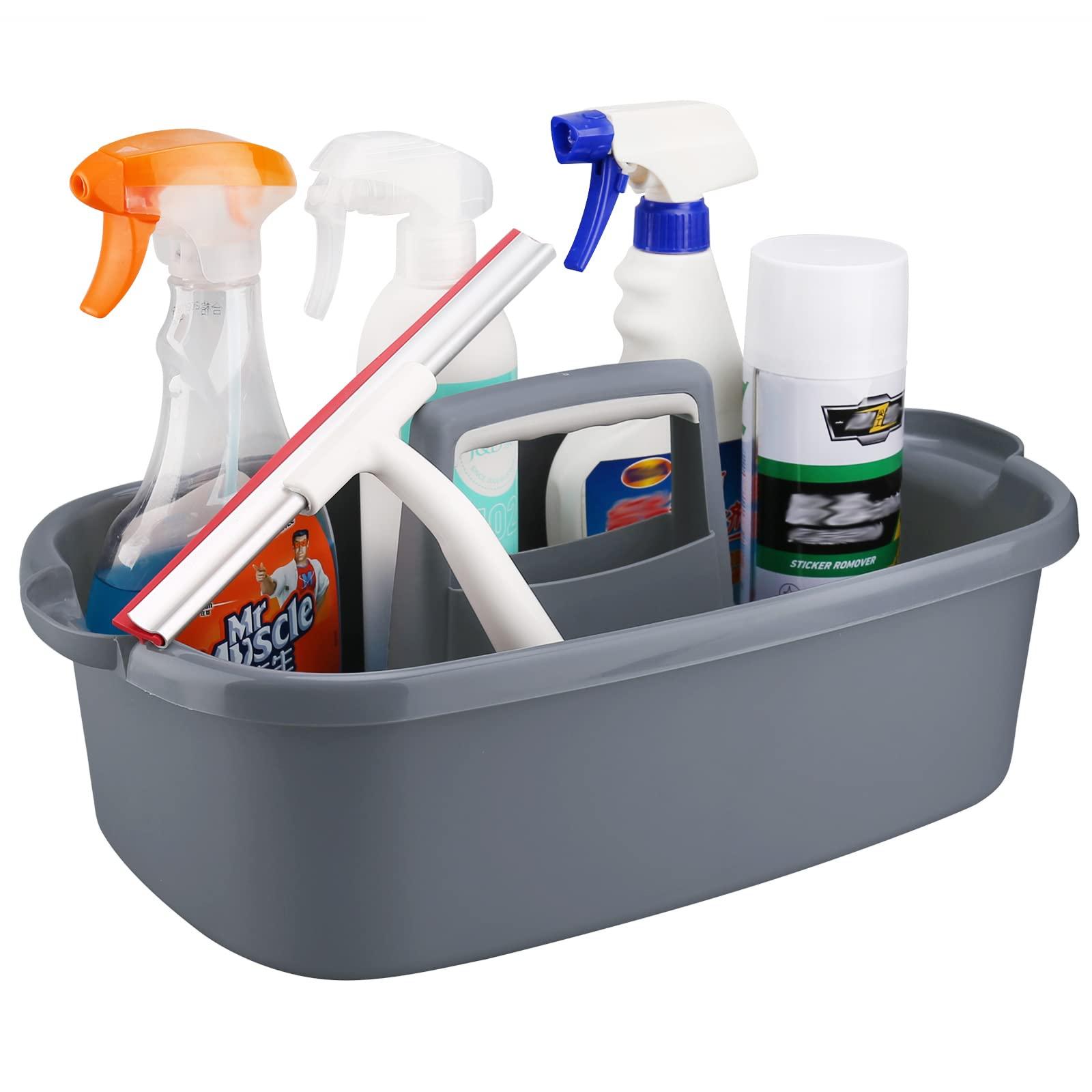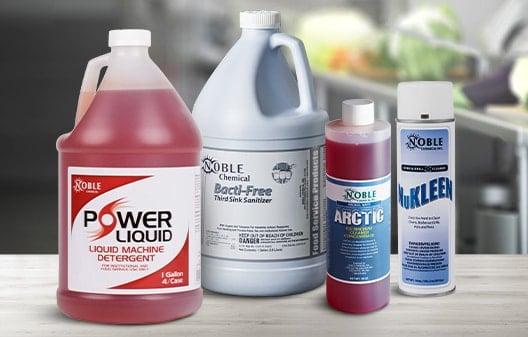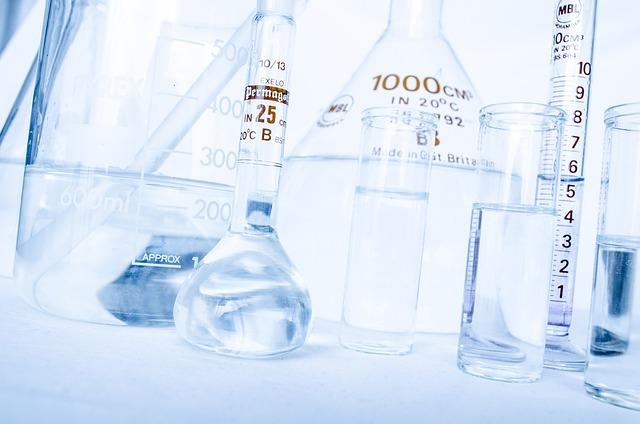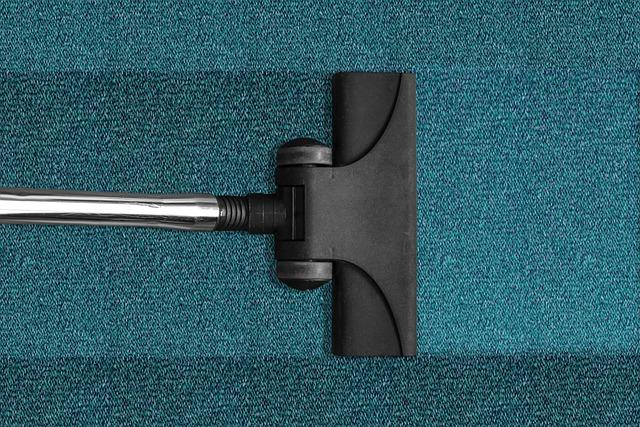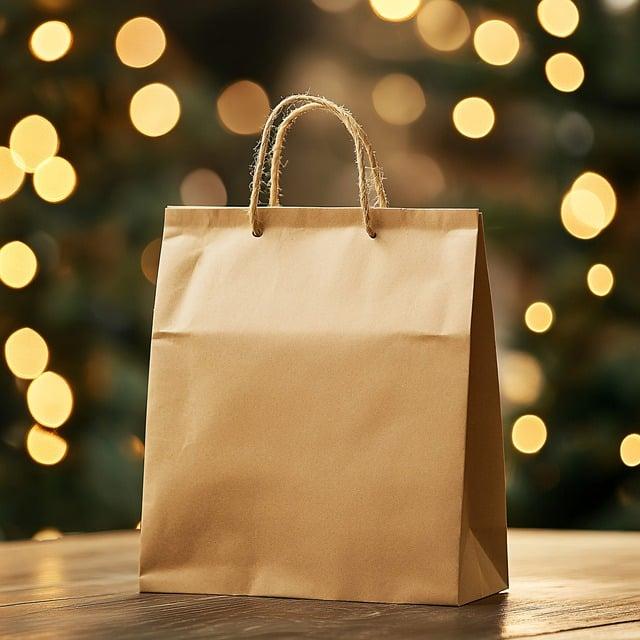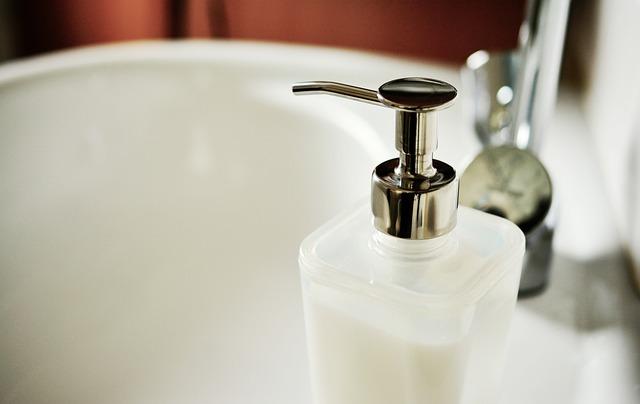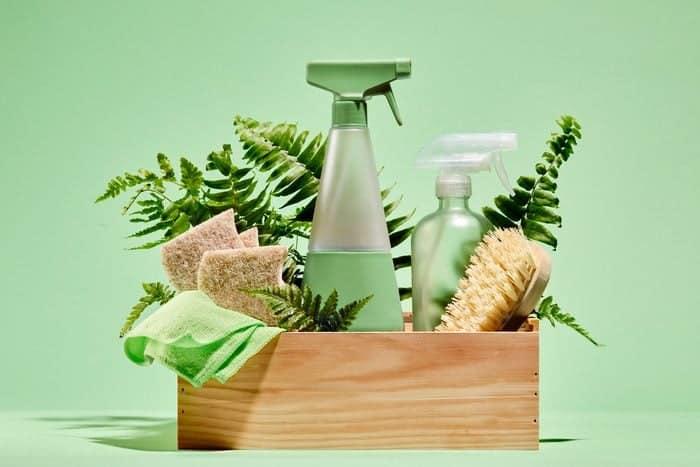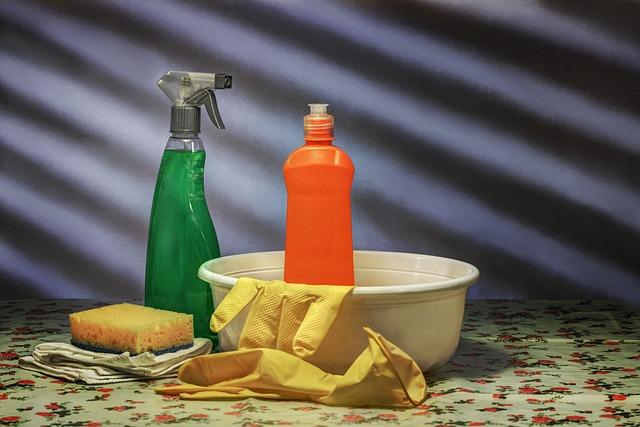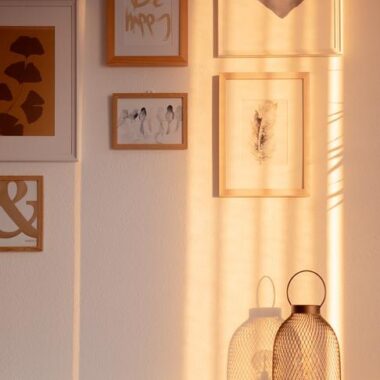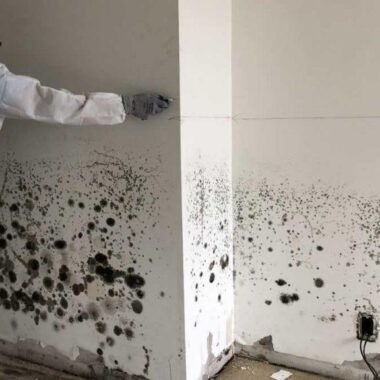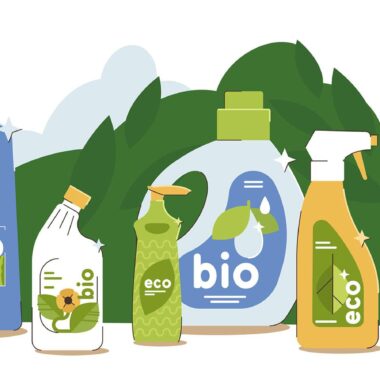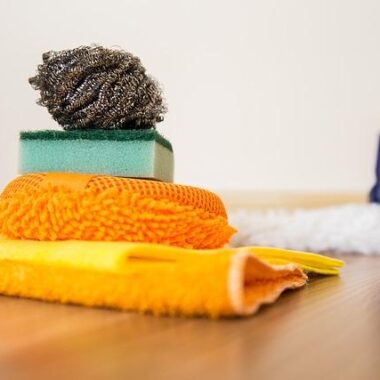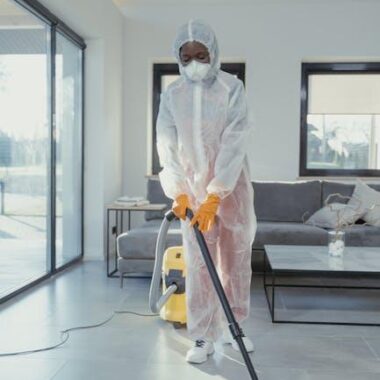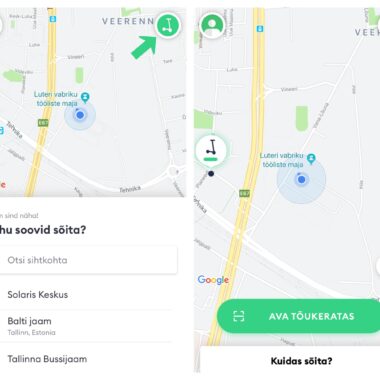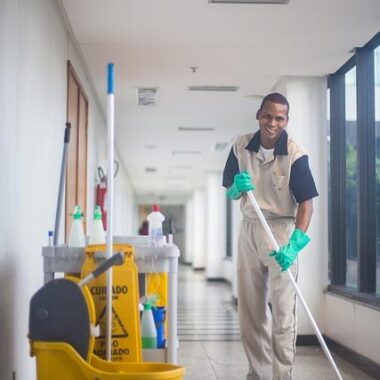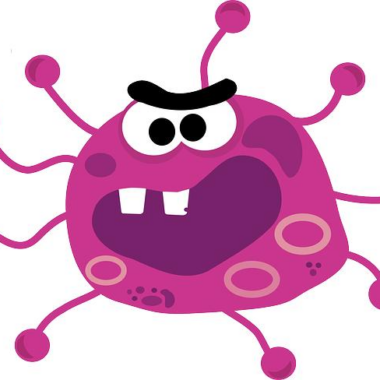Have you ever paused to consider what’s lurking beneath your sink or in that cleaning cabinet? We all want a fresh and clean home, but what if I told you that those chemical cleaners you’ve been relying on might come with hidden dangers? It’s like inviting an unwelcome guest into your space, one that not only makes your home sparkle but also brings along a host of harmful effects. From respiratory issues to skin irritations, these conventional cleaners can pose significant risks to your health and the well-being of your loved ones.
But don’t worry! In this article, we’ll uncover the not-so-glamorous truth behind chemical cleaners and why you might want to rethink your cleaning routine. Plus, we’ll share some fantastic natural alternatives that are just as effective—if not more—without the toxic baggage. So, grab a cup of tea, relax, and let’s dive into a cleaner, greener way to keep your space spotless!
Table of Contents
- – Uncovering the Risks: What’s Lurking in Your Cleaning Supplies
- – Why Chemical Cleaners Might Be Harming More than Just Dirt
- – The Hidden Symptoms: Are Your Cleaners Making You Feel Unwell?
- – Natural Alternatives to Chemical Cleaners: What Works Best?
- – The Power of DIY: Simple Recipes for Eco-Friendly Cleaners
- – How to Safely Clean: Tips for a Healthier Home Environment
- – Transitioning to Green Cleaning: Steps for a Smooth Switch
- – Real Stories: How Families Improved Their Health by Ditching Chemicals
- – Future-Proofing Your Home: Making Sustainable Choices Today
- Q&A
- To Conclude
– Uncovering the Risks: What’s Lurking in Your Cleaning Supplies
When you’re scrubbing away the grime in your kitchen or bathroom, it’s easy to assume you’re making your home a safer place. However, many conventional cleaning products come packed with a cocktail of chemicals that might do more harm than good. Have you ever wondered what those hard-to-pronounce ingredients really are? Phthalates, formaldehyde, and various fragrant chemical compounds could be hiding in plain sight, and they may have serious implications for your health.
Let’s break it down. Many popular cleaners contain ingredients linked to respiratory distress, skin irritations, and even hormone disruption. For example, the average household might have a bottle of an all-purpose cleaner that lists glycol ethers among its contents. While they’re effective at cutting through grease, prolonged exposure can lead to headaches and fatigue. Yikes! Who knew cleaning could make you feel so bad?
Ever noticed how some cleaners come with a very unpleasant set of warnings? That’s because of what they also contribute to indoor air quality. Volatile Organic Compounds (VOCs) can evaporate into the air and linger long after you’ve finished cleaning. These can result in poor air quality—making your living space feel more like a chemical lab than a home. If you’ve ever felt queasy after a cleaning session, now you know why!
It doesn’t stop there; we also have to think about our furry friends who share our homes. Many of the harsh chemicals in cleaning supplies can be harmful, or even deadly, to pets if they ingest residues or breathe in fumes. After all, no one wants to trade a nice clean floor for a trip to the vet. Keeping clean shouldn’t come at the expense of our pets’ safety, right?
So what can we do instead? Thankfully, there’s a growing trend towards natural alternatives. From vinegar and baking soda to essential oils, these everyday items can provide effective cleaning solutions without the toxicity. For instance, a simple mix of vinegar and water is a fantastic way to tackle grime and sanitize surfaces. Plus, it leaves your home smelling fresh without the overpowering scent of chemical fragrances.
| Natural Cleaners | Benefits |
|---|---|
| Baking Soda | Deodorizes and scrubs without scratching surfaces |
| Vinegar | Effectively cuts grease and sanitizes |
| Liquid Castile Soap | Gentle, biodegradable, and versatile across cleaning tasks |
| Essential Oils | Add natural fragrance and antiseptic properties |
– Why Chemical Cleaners Might Be Harming More than Just Dirt
When you reach for that brightly-colored bottle of chemical cleaner, you might think you’re just tackling grease and grime. But did you know that these seemingly innocent products can actually unleash a trove of hidden dangers? Many chemical cleaners contain ingredients that can have serious implications not only for your health but for the environment and even your pets. Let’s dive into what’s lurking beneath the surface.
These cleaners can contain volatile organic compounds (VOCs), which evaporate at room temperature and can significantly impact air quality. When you’re spritzing that all-purpose cleaner, you’re releasing VOCs that can contribute to headaches, dizziness, or more severe respiratory issues. But that’s not all! Prolonged exposure can lead to chronic health problems. It’s worth asking: is a clean home worth risking your health?
Beyond personal well-being, let’s not overlook our furry friends. Many people don’t realize that common ingredients found in cleaning products can be toxic to pets. For example, the sweet aroma of a lemon-scented cleaner could be enticing, but ingredients like phenols can be lethal to cats and dogs. Have you ever seen your pet sniff around after you’ve cleaned? You wouldn’t want that curiosity to spell disaster for your beloved animals.
And what about the environmental impact? When we use chemical cleaners, residues don’t just disappear—they end up in our water systems. Substances like phosphates and surfactants can disrupt aquatic ecosystems, harming fish and aquatic plants. This ripple effect impacts not just our drinking water but the entire planet. It’s a cycle that’s easy to overlook when you’re just aiming for a spotless countertop, isn’t it?
Moreover, the packaging itself often contributes to the problem. Single-use plastic containers that hold these chemical solutions add to the mountains of waste that burden landfills. Did you know that many plastic bottles take hundreds of years to decompose? It’s a harsh truth that it’s not just dirt being cleaned—our choices have a lasting impact on the world around us.
So, what’s the alternative? By opting for more natural cleaning solutions such as vinegar, baking soda, or essential oils, we can maintain a clean living space without the trade-offs. Here’s a quick comparison:
| Chemical Cleaner | Natural Alternative |
|---|---|
| Contains VOCs | No VOCs, better air quality |
| Toxic to pets | Pet-friendly ingredients |
| Harmful to the environment | Biodegradable options |
| Generates plastic waste | Reusable containers |
– The Hidden Symptoms: Are Your Cleaners Making You Feel Unwell?
Ever noticed a headache creeping in after a good cleaning session? Or perhaps a scratchy throat that seems to pop up right after you’ve spritzed your counters? It’s not just your imagination. Many standard cleaning products are loaded with chemicals that can stir up all sorts of hidden symptoms. You might think you’re just dealing with dust or dirt, but it could actually be the cleaners themselves causing your discomfort.
Okay, let’s break it down: here are some common symptoms that can be linked to your cleaning supplies:
- Respiratory Issues: Coughing, wheezing, or shortness of breath can arise from inhaling volatile organic compounds (VOCs) found in cleaners.
- Skin Irritation: Rashes or itchy spots might indicate an allergic reaction to certain ingredients.
- Headaches: Frequent headaches can be a byproduct of exposure to strong chemical fragrances.
- Nausea: If you feel queasy after cleaning, it could be the overpowering scents and fumes.
- Fatigue: Chronic tiredness can stem from prolonged chemical exposure, making you feel drained instead of refreshed.
Surprisingly, many of these symptoms can be easily attributed to common cleaners, whether they are sprays, wipes, or even soaps. Think about it—when was the last time you actually checked the labels? Some products may advertise “freshness” but hide a cocktail of harsh ingredients behind that pleasant scent. For instance, the fragrance in your dish soap could contain phthalates, which are linked to reproductive issues.
Now, what can you do to alleviate these hidden dangers? Start by switching to green cleaners or products with minimal ingredients. Look for brands that highlight natural or organic certifications, which generally indicate a cleaner, less toxic experience. Your local grocery store probably has a whole aisle dedicated to eco-friendly products, and it’s worth exploring. You can even make some effective cleaners at home with simple ingredients like vinegar, baking soda, and essential oils.
Moreover, consider adopting a routine that minimizes the chemical load. For instance, clean less frequently but more thoroughly. This way, you use fewer products over time and allow your home to breathe between cleaning sessions. Don’t forget to ventilate—opening windows or using fans can help disperse those troublesome fumes during and after cleaning. Dusting and decluttering can also reduce the need for harsh chemicals entirely.
becoming more mindful of the cleaners you use can have a real impact on your well-being. Symptoms often go unnoticed until they become chronic, so it’s crucial to connect the dots between your cleaning habits and how you feel. Choosing natural products isn’t just a trend—it’s a step toward a healthier, happier home. Let’s clean smart, so we can truly enjoy our spaces without the hidden costs to our health!
– Natural Alternatives to Chemical Cleaners: What Works Best?
When it comes to keeping our homes clean, many of us reach for commercial cleaners without a second thought. But have you ever stopped to consider what’s in those bottles? From harsh chemicals to unpleasant fumes, chemical cleaners often do more harm than good. Luckily, there are some fantastic natural alternatives that not only cleanse your space but are also safe for you and your family. Let’s dive into what works best!
1. Baking Soda: This humble pantry staple is a powerhouse when it comes to cleaning. Use it as a gentle abrasive for scrubbing surfaces or create a paste with water to tackle tougher stains. Plus, it can help neutralize odors – sprinkle some in your refrigerator or even on carpets before vacuuming. Who knew something so simple could have such versatile uses?
2. White Vinegar: If you’re looking for a natural way to disinfect, white vinegar is your go-to. Its acetic acid content is effective against bacteria and grime. A mixture of equal parts vinegar and water can replace your all-purpose cleaner and is great for windows as well. Just be mindful of using it on stone surfaces, as the acidity can be too strong.
3. Essential Oils: Want your home to smell divine while you clean? Essential oils not only add a pleasant fragrance but some also have antimicrobial properties. For instance, tea tree oil is known for its disinfectant qualities, while lavender oil can help soothe your senses. A few drops in your cleaning solution can elevate your cleaning experience!
4. Lemon Juice: Fresh lemon juice is not just a tasty drink ingredient; it also shines when it comes to cleaning. Its natural acidity helps cut through grease while leaving a fresh scent behind. Mix lemon juice with baking soda to create a fantastic scrub for sinks and countertops. Moreover, the natural antibacterial properties make it a great option for sanitizing.
5. Castile Soap: This plant-based soap is a treasure in the world of natural cleaning. It’s biodegradable and safe for various surfaces – use it diluted with water for everything from kitchen counters to laundry. Plus, it’s gentle on the skin, making it a preferred choice for those who are sensitive to harsh chemicals.
6. Hydrogen Peroxide: A bit of a secret weapon, hydrogen peroxide is an effective natural disinfectant. Use it to tackle food stains, disinfect cutting boards, and even whiten laundry. Just remember to keep it in a dark bottle since sunlight can degrade its effectiveness over time. Using it is not just easy; it’s also a quick way to ensure your surfaces are germ-free!
| Cleaner | Uses |
|---|---|
| Baking Soda | Scrubbing, deodorizing, stain removal |
| White Vinegar | Disinfecting, all-purpose cleaning |
| Essential Oils | Fragrance, antimicrobial cleaning |
| Lemon Juice | De-greasing, antibacterial |
| Castile Soap | All-purpose, gentle skin cleaner |
| Hydrogen Peroxide | Disinfecting, stain removal |
– The Power of DIY: Simple Recipes for Eco-Friendly Cleaners
Ever walked down the cleaning aisle and been overwhelmed by the bright labels boasting incredible stain-fighting power? But have you ever stopped to wonder what’s actually lurking in those bottles? Many commercial cleaners are loaded with harsh chemicals that can irritate your skin, trigger asthma, or even mess with your hormones. Why put yourself and your family at risk when there are simple, effective alternatives at home?
You’d be amazed at how easy it is to whip up your own eco-friendly cleaners using ingredients you probably already have in your pantry. A few staples like white vinegar, baking soda, and essential oils can transform your cleaning routine into a safe and sustainable one. Let’s dive into some DIY recipes that are not just good for the planet but also gentle on your wallet!
- All-Purpose Cleaner: Mix one part water with one part vinegar in a spray bottle. Add a few drops of your favorite essential oil for a fresh scent. This blend cuts through grime and disinfects at the same time!
- Glass Cleaner: Combine water, vinegar, and a splash of rubbing alcohol for a streak-free shine on your windows. You’ll enjoy the clarity while keeping those toxic fumes at bay.
- Scrub for Tough Stains: Create a paste of baking soda and water. Apply it to tough spots, let it sit for a bit, and scrub away for a sparkling clean.
Not only are these DIY solutions safer, they’re often more effective. Think about it: if you can clean your surfaces with a mixture that smells like a salad dressing instead of an industrial facility, wouldn’t you choose that? Plus, you can feel good knowing you’re reducing plastic waste and chemical runoff. It’s a win-win!
For those who love a little extra flair in their cleaning routine, consider this handy table of recipes paired with essential oils for added benefits:
| Cleaner Type | Key Ingredients | Essential Oils |
|---|---|---|
| All-Purpose Cleaner | Water, Vinegar | Lemon, Lavender |
| Glass Cleaner | Water, Vinegar, Alcohol | Mint, Eucalyptus |
| Tough Stain Scrub | Baking Soda, Water | Tea Tree, Orange |
With these simple recipes in your arsenal, you can reclaim your home from harsh chemicals and embrace cleaning that feels good and smells even better. Who knew that cleaning could become such an enjoyable and fulfilling task? Let’s get those DIY vibes going and keep our spaces safe and fresh!
– How to Safely Clean: Tips for a Healthier Home Environment
When it comes to cleaning, the products we often reach for can come with hidden dangers. Many chemical cleaners contain harsh ingredients that can harm our health and the environment. Instead of risking those harmful side effects, let’s explore some safe alternatives that can help you maintain a squeaky-clean home without the worry.
First, consider the power of vinegar. This pantry staple is not just for salads; it’s an excellent disinfectant that can tackle tough stains and odors. Mix equal parts of water and vinegar in a spray bottle, and you’ve got a natural cleaner that works wonders on countertops, glass, and even bathroom tiles. Just be sure to avoid using it on natural stone surfaces like granite or marble, as the acidity can damage them.
Next up is baking soda. It’s not just for baking; it’s a fantastic scrubber that helps eliminate tough grime and neutralizes odors. Try sprinkling some on your sink or stovetop, adding a few drops of water to make a paste, and scrubbing with a sponge. Rinse well, and you’ll be amazed at how fresh everything feels—plus, it’s completely safe for your family and pets!
If you want to get rid of pesky germs, look no further than essential oils. Oils such as tea tree, lavender, and eucalyptus not only smell wonderful but also have antibacterial properties. Add a few drops to your vinegar solution for that extra cleaning boost. Not only will your home smell divine, but you’ll also be creating a healthier environment free from harmful chemicals.
For fabric and upholstery cleaning, consider using castile soap. This biodegradable soap is gentle yet effective, making it perfect for a range of surfaces. Mix a few drops with water in a spray bottle to refresh your cushions or carpets. Plus, it’s safe for both humans and pets, so you can clean without worry.
| Natural Cleaner | Uses | Benefits |
|---|---|---|
| Vinegar | Countertops, glass | Disinfects, deodorizes |
| Baking Soda | Sink, stovetop | Scrubs, neutralizes odors |
| Essential Oils | Various surfaces | Antibacterial, fragrant |
| Castile Soap | Upholstery, fabrics | Gentle, biodegradable |
– Transitioning to Green Cleaning: Steps for a Smooth Switch
Switching to green cleaning doesn’t have to feel overwhelming. With a few simple steps, you can transform your cleaning game while keeping your home safe for your family and pets. First, start by decluttering your cleaning supply closet. Take a good look at what you have and make a decision: keep or toss. Remember, less is more!
Next, research alternatives. There are so many fantastic natural cleaning options out there. Think about using vinegar, baking soda, and essential oils. These ingredients not only pack a cleaning punch but are also gentle on the environment. Makes you wonder, huh? Your grandmother probably used them, and she always had a sparkling clean home!
After that, consider replacing one product at a time. It’s tempting to go all-in and ditch everything at once, but gradual changes can make the transition feel more manageable. Start with your all-purpose cleaner. A mix of vinegar and water can work wonders on surfaces, and it’s super easy to make. You’ll feel like a cleaning magician with these simple hacks up your sleeve!
Once you’ve chosen your natural replacements, explore more sustainable options. Brands focusing on environmental responsibility are popping up everywhere. Look for companies that offer refill stations or use biodegradable packaging. It’s a win-win situation: you get clean spaces, and the planet gets some love!
| Traditional Cleaner | Green Alternative |
|---|---|
| Bleach | Hydrogen Peroxide |
| Glass Cleaner | Vinegar and Water Mix |
| Fabric Softener | Baking Soda |
Don’t forget to involve the family in your new green cleaning routine! Turn it into a fun activity: make a game out of it or have a little “cleaning party.” Everyone loves a little music and snack while tackling chores. Plus, this way, you’re teaching your loved ones about sustainable practices, one scrub at a time!
- Real Stories: How Families Improved Their Health by Ditching Chemicals
– Future-Proofing Your Home: Making Sustainable Choices Today
When it comes to choosing cleaning products, you might think that a sparkling kitchen or a fresh-smelling bathroom means your home is safe. Unfortunately, many conventional chemical cleaners are hiding a dirty secret. These products often contain hazardous ingredients, including known carcinogens and irritants, that can wreak havoc on your health and the environment. Think about those toxic fumes you inhale when trying to scrub the shower—yikes!
So, how can you keep your home clean without jeopardizing your family’s health or harming the planet? Opting for sustainable cleaning solutions is a fantastic start. Natural alternatives, like baking soda and vinegar, can tackle tough stains without any harmful side effects. They work wonders and can even be more effective than traditional cleaners. Plus, you probably already have these items in your pantry!
Speaking of alternatives, here are some more eco-friendly cleaning tips:
- Castile soap: A plant-based soap that serves multiple purposes, from dishwashing to mopping floors.
- Essential oils: Add a few drops for antibacterial properties and a lovely scent—tea tree oil is an excellent choice!
- Hydrogen peroxide: A natural disinfectant that can replace bleach in many scenarios.
Another essential thing to consider is packaging. Many chemical cleaners come in single-use plastic bottles that contribute to landfill waste. Think about switching to bulk purchasing or opting for brands that use biodegradable or recyclable packaging. This simple change can significantly reduce your environmental footprint and foster a cleaner, greener planet for future generations.
Let’s not overlook the power of DIY cleaning products! Making your cleaning supplies allows you to control the ingredients, ensuring they’re safe and sustainable. Here’s a quick recipe for a versatile all-purpose cleaner:
| Ingredients | Measurements |
|---|---|
| White vinegar | 1 cup |
| Water | 1 cup |
| Essential oil (e.g., lemon) | 10 drops |
By incorporating these eco-friendly cleaning practices into your routine, you can protect not only your home but also the planet. It’s all about making smart choices today for a sustainable tomorrow. Remember, every little bit helps, and together we can create a cleaner, healthier environment for ourselves, our families, and the world!
Q&A
Q&A:
Q: What are the main dangers of using chemical cleaners?
A: Great question! Chemical cleaners can contain harsh substances that are not only harmful to the environment but can also affect your health. Things like respiratory problems, skin irritations, and even long-term organ damage are possible effects. Plus, have you ever noticed how some of these cleaners have strong smells? Those scents often signal dangerous chemicals that shouldn’t be inhaled.
Q: I’ve always thought a strong smell means a cleaner is effective. Is that true?
A: It’s a common misconception! Just because something smells strong doesn’t mean it cleans better. It often means it’s full of chemicals that you’d want to avoid. Imagine using a lemon or vinegar; those have a mild scent but are incredibly effective and safe alternatives!
Q: What should I use instead of chemical cleaners?
A: There are plenty of fantastic options that are safe and effective! For everyday surfaces, try mixing vinegar and water or baking soda with water for scrubbing. Not only are these options eco-friendly, but they can do an amazing job at cutting through grime.
Q: Are DIY cleaners as effective as store-bought ones?
A: Absolutely! Many DIY cleaners are just as effective. For example, baking soda is great for deodorizing, while vinegar can tackle soap scum like a champion. Plus, you can be confident knowing exactly what’s in them—no mystery chemicals here!
Q: How do I convince my family to switch to natural cleaners?
A: Start by sharing what you’ve learned about the potential risks of chemical cleaners with them. You could have fun experimenting with DIY cleaning solutions together. Maybe even challenge them to try it for a week and see if they notice a difference. Who doesn’t love a good science experiment?
Q: Are there any specific brands you recommend for natural cleaning products?
A: If you’re looking for ready-to-use options, consider eco-friendly brands like Seventh Generation or Mrs. Meyer’s Clean Day. They get the job done without all the chemical baggage. A quick browse in your local store or online can yield a bunch of amazing brands that prioritize safety.
Q: Can I use essential oils in my cleaning routine?
A: Totally! Essential oils not only provide a pleasant scent but can also have antibacterial properties. Oils like tea tree, lavender, and lemon are popular choices. Just remember to dilute them properly before cleaning!
Q: Do I need to inform anyone about my switch to natural cleaners?
A: If you’re living with others, it’s a good idea to have a chat about it. Some might be concerned at first, so sharing your insights and maybe even demoing the cleaners can help ease any worries. Just think, you could all enjoy a fresher, healthier home together!
Q: What’s the final takeaway?
A: Switching to natural cleaners doesn’t just benefit your health; it’s also kind to the planet. So why not make the switch? Explore different cleaners, experiment with some DIY solutions, and create a cleaning routine that’s safe and effective. You might find it’s not just a chore but a fun part of your day!
Feel inspired to start your journey toward a cleaner, safer home? Dive in and try out some new, healthy cleaning methods today!
To Conclude
And there you have it! The hidden dangers of chemical cleaners are no joke, right? We’ve explored how these seemingly harmless products can be lurking in your home, ready to unleash unwanted side effects. So why take that risk when there are cleaner, greener alternatives out there that not only protect your health but also help the environment?
Imagine walking into a home that smells fresh and is free from harmful chemicals—sounds nice, doesn’t it? By making the switch to natural cleaning solutions, you’re not only creating a safer space for yourself and your loved ones but contributing positively to the planet!
Now it’s your turn to take action! Start decluttering those toxic cleaners from your cabinets today and explore the world of natural cleaning alternatives. Your home— and your lungs—will thank you! Got a favorite “green” cleaning hack? Share it with us in the comments below! Let’s inspire each other to create healthier homes, one cleaning bottle at a time. Happy cleaning! 🌿✨


